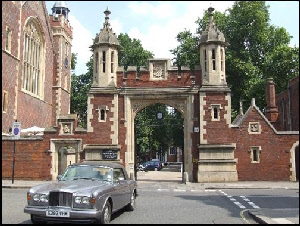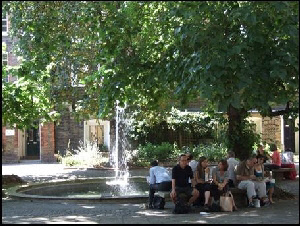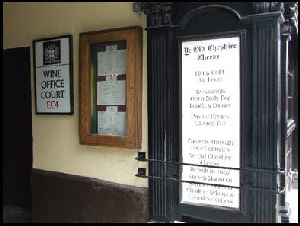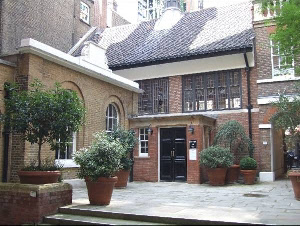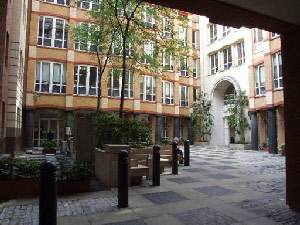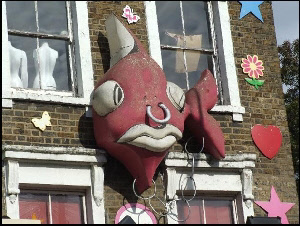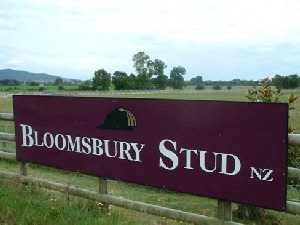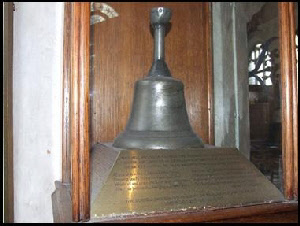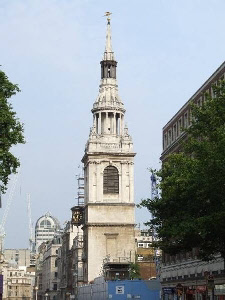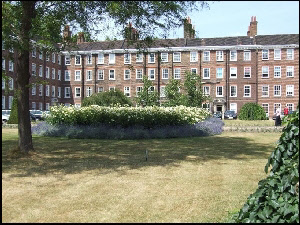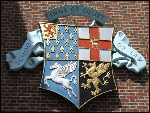Lincoln’s Inn is another of the four great Inns of Court that have dominated London for nearly 1000 years. It covers a large area – if you walk into the gate below right in Lincoln’s Inn Fields, you can leave the Inn on Chancery Lane. I couldn’t fit the entire building into one photo. This picture below shows the library part of the main building and just to my right there is the great Hall, which is the dining room and members area. In the grounds is a beautiful, large Regency building containing lots of legal chambers and behind a central lawn, dominated by a fountain and “Keep off the Grass” signs, there is a long five-storey black brick construction called Old Buildings that dates from the 1600s.
To get there from Holborn, turn left up to High Holborn and walk to Pendrells Oak pub. Turn left into a grubby, smelly (guess why) little lane called Gt Turnstile and follow it into a large square with a park in the middle. The park is called Lincoln’s Inn Gardens, and every street around the park is called Lincoln’s Inn Fields…
There is a nice little kiosk in Lincoln’s Inn Gardens where you can eat lunch, or you can walk through this gate, below, into an altogether much more beautiful and luxurious semi-private garden in Lincoln’s Inn itself, where you can eat your lunch from a brown paper bag and imagine you are a wealthy lawyer.
Lincoln’s Inn has a very nice chapel with an odd feature. This is the first time I have seen a ground-level crypt. The flagstones in the picture below are actually headstones and you can wander about in the crypt and read the stories of mostly Victorian lawyers. During the Blitz a bomb fell in the courtyard and blew out all the windows. Inside the chapel there are memorials and coats-of-arms of the leaders of Lincoln’s Inn. These men were also powerful members of England’s elite.
I first read John Donne in high school and then studied him at university. I didn’t realise he was a London poet and the chaplain of Lincoln’s Inn, but I did know he was a clergyman, with the same language of passion for his girlfriend as for his religion. A most interesting chap. This tiny piece of stained glass window, below, which would fit into a saucer, is part of his record in the chapel. There is also an evocative portrait and a coat of arms.

John Donne memorial window in the Chapel of Lincolns Inn.


